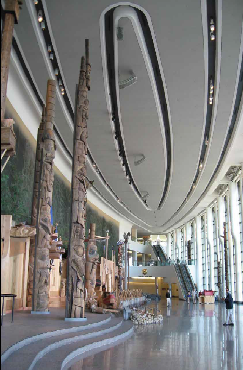Abstract
This article identifies the principal characteristics and meanings of the architecture in three important museums that exhibit pre-Columbian collections side by side with the present situation of native peoples in Canada, Mexico and the United States. The three analyzed museums are the Museo Nacional de Antropología in Mexico City, projected by Pedro Ramírez Vázquez (1964); the Canadian Museum of Civilization of Ottawa-Gatineau, build by Douglas Cardinal (1989), and the National Museum of the American Indian of Washington, D.C., also projected by Cardinal (2004). A comparison relates the architectonic, curatorial, and museographic aspects of these museums to national identity and cultural diversity. At the end, the risks in the construction of different concepts of “indigenous heritage” will be discussed.
Apuntes is registered under a Creative Commons Attribution 4.0 International Public License. Thus, this work may be reproduced, distributed, and publicly shared in digital format, as long as the names of the authors and Pontificia Universidad Javeriana are acknowledged. Others are allowed to quote, adapt, transform, auto-archive, republish, and create based on this material, for any purpose (even commercial ones), provided the authorship is duly acknowledged, a link to the original work is provided, and it is specified if changes have been made. Pontificia Universidad Javeriana does not hold the rights of published works and the authors are solely responsible for the contents of their works; they keep the moral, intellectual, privacy, and publicity rights.
Approving the intervention of the work (review, copy-editing, translation, layout) and the following outreach, are granted through an use license and not through an assignment of rights. This means the journal and Pontificia Universidad Javeriana cannot be held responsible for any ethical malpractice by the authors. As a consequence of the protection granted by the use license, the journal is not required to publish recantations or modify information already published, unless the errata stems from the editorial management process. Publishing contents in this journal does not generate royalties for contributors.


